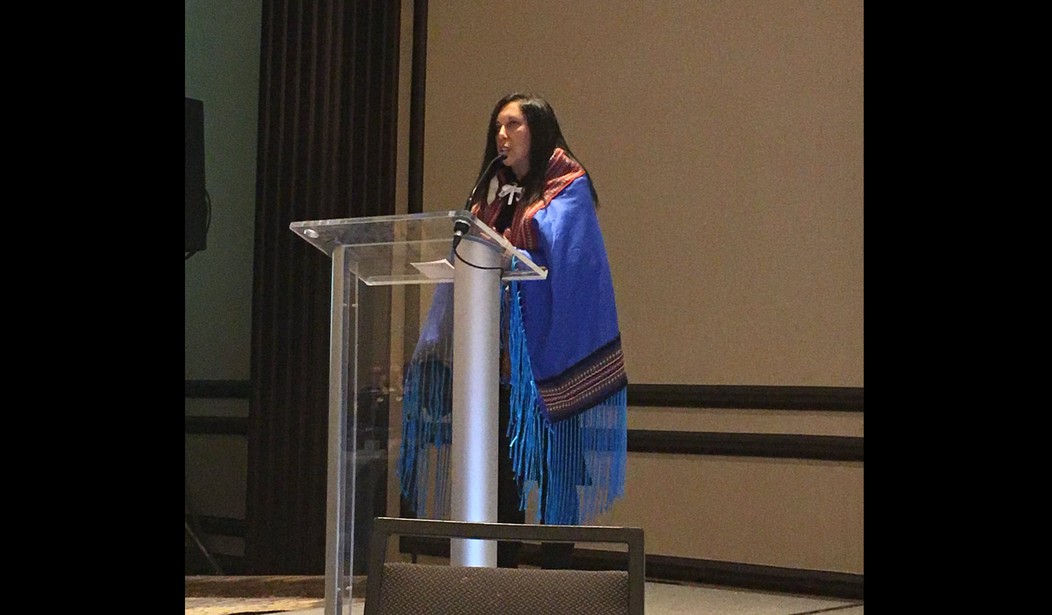Carrie Bourassa, who served as scientific director of the Institute of Indigenous Peoples’ Health at the Canadian Institutes of Health Research, has been ousted from her post and her university professorship after she was exposed as a fake Indigenous Canadian.
Colleagues got suspicious as she began adding on to her lineage of native tribes. She claimed to be a member of the Métis Nation. She also claimed Anishinaabe heritage and asserted that she’s a descendant of the Tlingit, a small group of Indigenous people from the Yukon and British Columbia.
The Canadian Broadcasting Company traced her ancestry and didn’t find a drop of native blood. It turns out Ms. Bourassa descended from immigrant farmers who hailed from Russia, Poland, and Czechoslovakia.
Y’all still doing this mess?
Carrie Bourassa … a professor at the University of Saskatchewan, has been ousted after her claims to an indigenous ancestry proved false. https://t.co/lahyLNTkha
— You can pick my brain when that invoice is paid. (@DrBWillingham) November 28, 2021
This is a woman who really got caught up in the deception. She showed up at a TED conference decked out in full Native American gear, complete with a feather in her hair.
Colleagues began to doubt Bourassa’s story as she began to add claims of Anishinaabe and Tlingit heritage to her tale — and took to dressing in stereotypically indigenous fashion.
It started to unravel in 2019, when she appeared in full tribal regalia — draped in an electric blue shawl, with a feather in her partially braided hair — to give a TEDx Talk at the University of Saskatchewan in Saskatoon.
“My name is Morning Star Bear,” she said tearfully as the crowd cheered.
“I’m Bear Clan. I’m Anishinaabe Métis from Treaty Four Territory,” she proclaimed as she described an impoverished childhood beset by violence.
When exposed, Bourassa doubled down, giving a ludicrous explanation of what she really meant.
But when pressed to provide evidence of Native American heritage, Bourassa suddenly changed her story — saying that she had been adopted into the Métis community by an unnamed Métis friend of her deceased grandfather, Clifford Laroque.
“Even though Clifford passed, those bonds are even deeper than death because the family has taken me as if I was their blood family,” she insisted in a statement. “In turn, I serve the Métis community to the best of my ability.”
Oh, really? How do you explain this heart-tugging story told about that same grandfather in September 2019?
She said her saving grace was her Métis grandfather, who would often sit her on his knee and tell her “you’re going to be a doctor or a lawyer.”
“He would make me repeat it over and over as there was chaos going on, usually violence,” Bourassa said. “And why would he make me say that? Because there was nobody in my family that had ever gone past Grade 8.”
Of course, we here in America have had our share of fake Native Americans like Sen. Elizabeth Warren (D-Mass.) and even fake blacks like Rachel Dolezal. Inevitably, they’re exposed when they try to use their fake ancestry to advance in their professional life.
But in Bourassa’s case, she was apparently more than competent in performing her duties. Until she was exposed, she was extremely well thought of.
In an email, the CIHR calls Bourassa “a Métis woman, a highly regarded Indigenous researcher” who “has been a selfless leader and a tireless champion for all Indigenous Peoples in this country.”
Earlier this week, CIHR took to Twitter to celebrate that Bourassa was just named one of Canada’s 100 most powerful women for 2021 by WXN, a Toronto-based women’s advocacy group.
Why should it matter what color someone is if they’re doing a great job? Could an Indigenous person do the job better? It’s why hiring based on color is so stupid and silly.










Join the conversation as a VIP Member